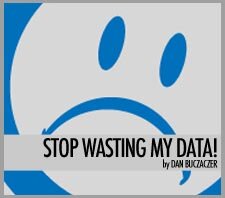Why collaboration might save marketing agencies
Posted by Saneel Radia | January 4, 2010
I’ve had multiple clients in the last few months ask how to better collaborate with consumers. The one thing that’s clear from those conversations is that “collaboration” is a vague term. From what I can tell, marketing people focus on only a fraction of its potential, and it’s the wrong fraction. In fact, I’ve become convinced an expertise in collaboration may just be the catalyst for agencies to reinvent their business models— and the industry as a whole.
Loosely, there appear to be 3 major ways companies collaborate with their customers. They vary dramatically by synchrony of collaboration, the potential audience that is likely to engage, and the commitment required by the company leading the effort.
CROWD-SOURCING
I list this first because it consumes about 95% of conversation about collaboration. Multi-national companies look covetously at Starbucks and Dell, trying to quantify the benefit they’ve seen from such efforts. Media companies (e.g., Digg) and some retailers (e.g., Threadless) have shown the most democratized type of crowd-sourcing when they employ an audience vote-driven model. Yet even when voting is employed, crowd-sourcing appears to be the least collaborative of the options (which might be exactly why it’s the first to be embraced). In most cases, crowd-sourcing is the equivalent of a suggestion box on steroids. Most importantly, it’s unique in that it is asking people to turn over their intellectual property for little to no reward. Thus, it tends to limit collaboration to a brand’s most loyal consumer base. These aren’t necessarily weaknesses, but not understanding those dynamics tends to be the primary cause when it fails. In many cases, the economics of crowd-sourcing can be easily manipulated by simply increasing the reward for those involved. NetFlix managed to get even non-customers to participate in improving their algorithm because the stakes were a million dollars. However, it should be telling that something else is at play when teams collaborated with one another even though they were supposed to be competing.
Other examples: Jovoto, Victors & Spoils*, Fluther
GROUP ACHIEVEMENT
This one has its roots in multi-player gaming. The best example is when World of Warcraft required masses of players to come together before opening The Dark Portal, which was a gateway into an entirely new area of the WoW universe. Until enough players had gathered, it simply wasn’t available. This may not sound familiar to marketers on the surface, but brands are starting to use it more often. It just happens to be limited to promotional activity. For example, Groupon has built an unbelievably successful business getting local establishments to provide a discount once enough consumer volume has justified the coupon. This model is really interesting because of the transparency involved. In this case, the end game is known, which serves as a unique promise and motivation to potential collaborators. This is in sharp contrast to crowd-sourcing, in which consumers are motivated by rewards or goodwill for a brand they care about, irrespective of the outcome. It’s this distinction that makes it highly relevant for those considering collaborative product development or testing, especially for a new target audience.
Other examples: The Point, Kickstarter, Buying Pabst
CO-CREATION
This model is the one that best delivers on the promise of ‘collaboration’ in my opinion. In it, customers come together to achieve something of superior quality or quantity than the company alone or any smaller group of customers is capable of. Success here has been almost entirely limited to the tech space. Shaun Abrahamson, CEO of Mutopo (who may just know more about collaboration than anyone else in the world) has introduced me to a number of intriguing examples of what he terms “mass collaboration.” He argues that it’s the ability to collaborate at this higher level that allows companies like WordPress and Craigslist to service huge numbers of customers with a disproportionately small number of employees. This form of collaboration involves the least amount of centralized control, which is likely why it’s also the most ignored form. It’s especially tough to build an infrastructure to collaborate effectively (Shaun has labeled these systems “scaffolding,” a term Denuo has lovingly stolen), but when done correctly, the rewards are staggering. Yet for some reason, this one is regularly dismissed by marketers due to an antiquated perception of communication as a masterpiece—an entity to be revealed, not iterated.
Ironically, brands that have built themselves iteratively through this form of collaboration, like Mozilla, tend to have incredibly loyal customers (not surprising given the sense of ownership that comes from co-creation) It’s co-creation as collaboration that may be the potential savior for marketing agencies in the future. For all the noise agencies make about no longer being treated as partners, but instead being relegated to “vendors” as a result of pricing pressure and unrealistic client demands, they seem to be ignoring this unprecedented opportunity. If brand communication is going to resemble more of a dialogue than ever before, and companies want to ask consumers for more than a purchase, brands will inevitably want to find a way to create collaborative dialogues. That’s not something that can be farmed out to a “vendor.” It impacts every level of a client’s business and therefore, by its very nature, demands a partner that fundamentally understands their business and vision for the future. Yet, at its core, it’s about communication, the lifeblood of existing agency expertise. In fact, the parts of a business that can benefit most from collaboration are generally the parts that struggle to communicate the most. As marketers, we take for granted the difficulty of outlining a vision and responding to various feedback loops, however most R&D or product teams will tell you that communication is, in fact, one of the biggest challenges in an innovation process that’s difficult to map out.
For agencies, the leap from communication creator to collaborative dialogue facilitator isn’t small, but it’s certainly not insurmountable. In fact, it’s quite a smaller gap to close for marketing agencies than it is for any other type of business (including technology companies building collaboration tools). Take for example, the recent release of the game Modern Warfare 2, which employed a “community manager” during development. Infinity Ward, the game’s developer, tasked (of a marketing background) to make the game design process collaborative with consumers, thousands of whom have strong opinions about features and experiences they are regularly expressing via social media. When the crowd tells him things Infinity Ward simply isn’t going to do, it’s also his job to manage them with reasons for the rejection (when was the last time a suggestion box did that?). He’s a core part of the team with formal accountability for collaboration. His primary means for accomplishing this feat: communication. This type of activity requires thinking of collaboration as more than just crowd-sourcing. Ultimately, it’s not about defining these various tiers, but understanding collaboration’s potential when customers are brought into the core of a business rather than sitting on the periphery tossing over suggestions. Determining the potential value for a client, building the communication scaffolding to do it effectively, and managing it throughout seems to be a huge opportunity for agencies in desperate need of innovation. The question is: who will capitalize on it?
*Victors & Spoils is built on “crowd-sourcing” principles, so it’s more collaborative than the way most consumer brands work with customers. In fact, for the logo design effort, every entry received personalized creative feedback from the staff.
Related Posts
Leave a Comment
RSS feed for comments on this post · TrackBack URI


